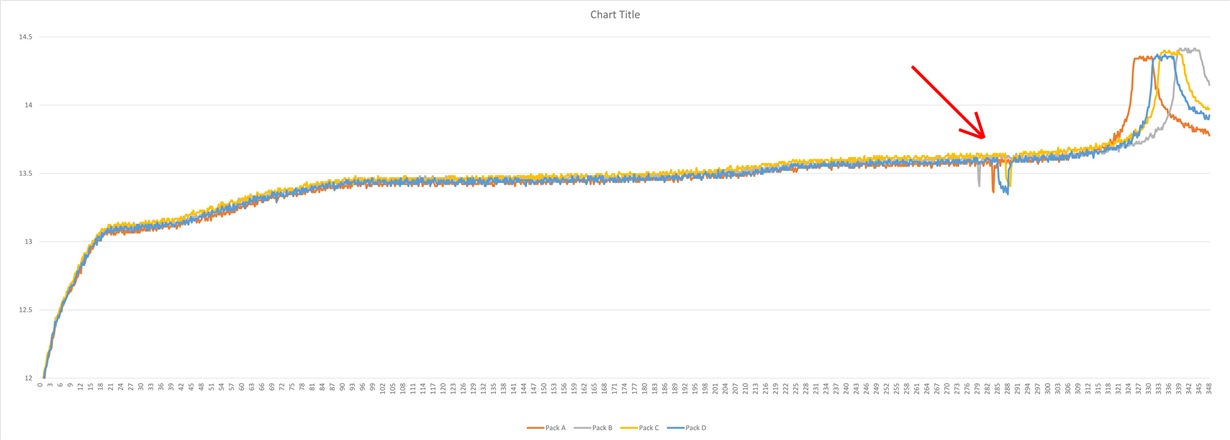Hi,
I have a custom charger board utilizing four BQ24620 circuits. They are charging 12.8V, 93Wh packs very slowly. The maximum current is set at 1.22A, which takes about 6 hours to complete.
At about 5-hour mark all four chargers disengage from batteries and then resume charging 15-200 seconds later (see attached graph).
Since the packs are about 80% charged at the 5-hour mark, is there danger of the IC deciding that this is close enough and not resuming charging to add the last 20%?
Thanks,
Alex


